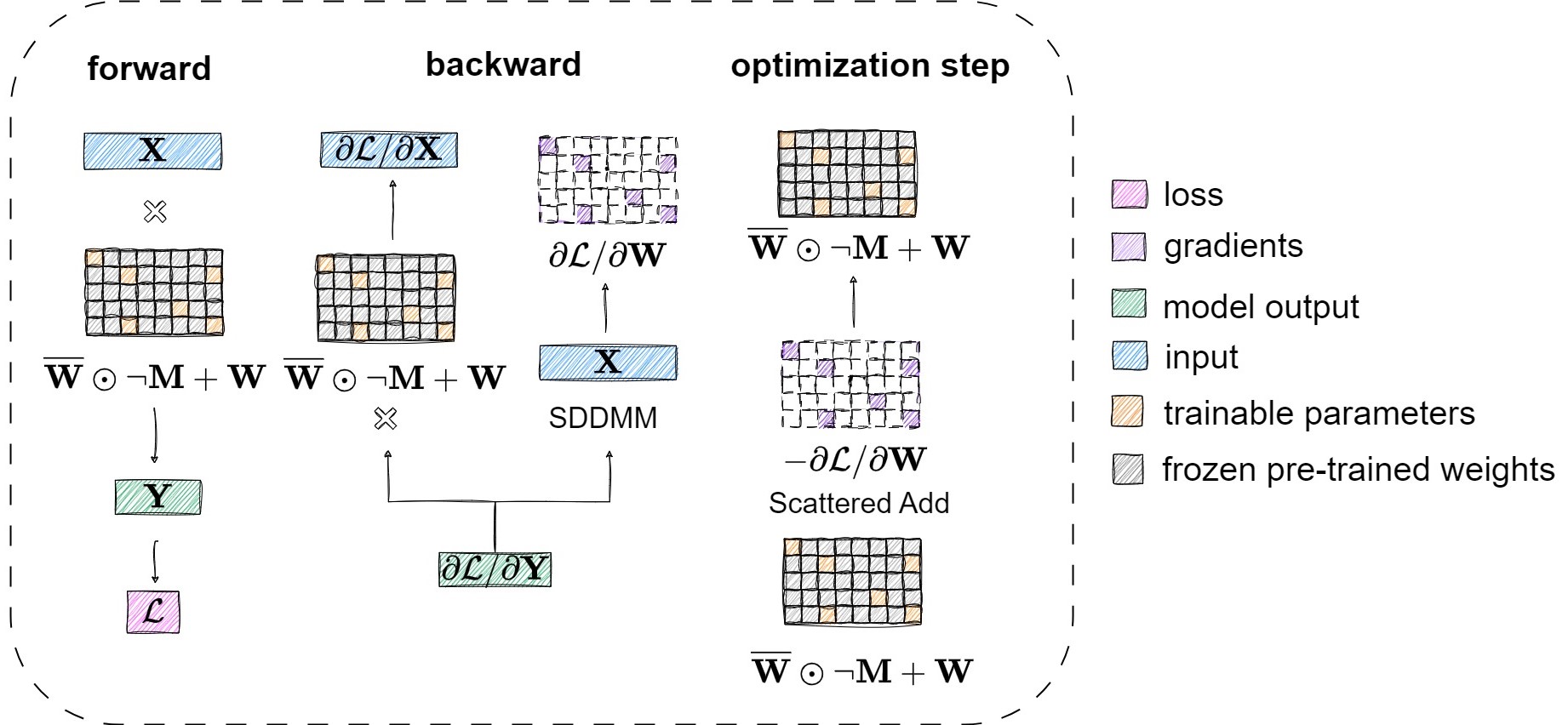Sylva is a library that accelerates fine-tuning via hierarchical approximate second-order information and sparse embedded adapters. Sylva leverages second-order information to identify the importance of parameters in the pre-trained LLM with a pre-processing step. During fine-tuning, Sylva trains only a small number of important parameters and freezes the pre-trained weights. Furthermore, Sylva embeds the sparse trainable parameters into the frozen pre-trained weights with a block sparse pattern. Overall, Sylva obtains both high fine-tuning performance and high model quality.
Environment:
conda create -n sylva python
conda activate sylva
pip install -r requirements.txt
pip install -e .
Example Usage:
- Fine-tuning LLaMA-7B with Sylva (98.4% sparsity) on the ~9k sample OASST1 dataset improves 5-shot MMLU evaluation accuracy from 32.98 to 38.13 in ~14k steps (~865 steps with 16 gradient accumulation steps).
Running
bash scripts/run-llama-oasst-mmlu.sh
will pick up the pre-computed masks (under .cache) for the sparse embedded adapters in Sylva and start fine-tuning the model.
On Google Cloud G2 machines with NVIDIA L4 GPUs, Sylva is, on average, 1.3x faster than LoRA if fine-tuning only the attention modules of LLaMA-7B, ~1.4x faster than LoRA, and ~6.4x faster than ZeRO full fine-tuning if fine-tuning all linear modules of LLaMA-7B.
scope: The scope of modules to be fine-tuned. For example, to fine-tune all linear modules in LLaMA-7B, set the scope tomodel.layers. To fine-tune only the attention modules, set the scope toself_attn.sparsity: The percentage of trainable parameters for modules under the specified scope. The overall sparsity (i.e. the percentage of trainable parameters in the entire model) is typically higher.preprocess_num_samples: The number of samples used in the pre-processing step.num_partition: The number of partitions in the hierarchical approximation of second-order information.block_size: The size of the non-zero blocks in Sylva's sparse embedded adapters.
We use some of the code in the LoRA and qlora libraries, see NOTICE for details.
This project is licensed under the Apache 2.0 license.
Paper | The 38th ACM International Conference on Supercomputing (ICS'24)
Sylva: Sparse Embedded Adapters via Hierarchical Approximate Second-Order Information
@inproceedings{sylva-ics-24,
author = {Mu, Baorun and Giannoula, Christina and Wang, Shang and Pekhimenko, Gennady},
title = {Sylva: Sparse Embedded Adapters via Hierarchical Approximate Second-Order Information},
year = {2024},
isbn = {9798400706103},
publisher = {Association for Computing Machinery},
address = {New York, NY, USA},
url = {https://doi.org/10.1145/3650200.3656619},
doi = {10.1145/3650200.3656619},
booktitle = {Proceedings of the 38th ACM International Conference on Supercomputing},
pages = {485–497},
numpages = {13},
keywords = {GPUs, fine-tuning, large language models},
location = {<conf-loc>, <city>Kyoto</city>, <country>Japan</country>, </conf-loc>},
series = {ICS '24}
}